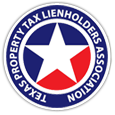The government entity entrusted with valuing properties is known as the County Appraisal District, known as the “CAD” and in some counties called the Central Appraisal District. The CAD is part of your county’s government, and their job is to determine the value of all taxable property within the county boundaries. Covering all the properties in the county is a huge task, but the State government requires counties to do so at least once every three years. During periods of rising property values, it pays for the county to try to revisit as many properties as they can. During periods of dropping values, they may not reassess your property every year as they have little incentive to do so.
Generally, the CADs will use a similar approach to similar types of properties, and then revisit individual properties that make the property dissimilar. This bulk approach is efficient but can mean the values aren’t that accurate. An example is to apply the same dollar amount per square foot for all properties in the same neighborhood. Other factors considered are land size, property age, property type, land usage, and recent upgrades. For properties without good comparable alternatives, appraisers will fall back on the techniques recommended by the Uniform Standards of Professional Appraisal Practice. The three most common methods of analyzing property values are: 1) sales comparisons, 2) income analysis, and 3) cost method.
When they can find comparables, CADs prefer to look to recent sale prices of similar properties in the same area. When comparing to the comparables, the CAD will add value for extra things the subject property has (a pool) and deduct value for things it might be missing (perhaps a garage). Note that they are looking for a value as of January 1 of the current tax year and comparing to sales around that January 1 timeframe, if available. If you did a big rehab on your house after January 1st, they won’t include that until the next year’s appraisal.
The income analysis method is used on investment property that has renters, whether a rent house or an office building. The value to the owner is directly related to how much rent they can get. The CAD normally applies market rents to the property and calculates gross annual income and then subtracts likely operating costs to arrive at a net income. They then divide that by a target return on investment (called the “capitalization rate” or “cap rate”, to arrive at a value. For instance, a property generating $10,000 of net income a year in an 8% cap rate market, would be valued at $125,000.
The cost method takes the value of the land, and then looks at the current cost value of the improvements after depreciation. Let’s say a 5-year-old building cost $100,000 to build, and the land is worth $20,000. If the building is estimated to have a 25-year life, then it depreciates $4,000 per year. After 5 years, it will have lost $20,000 in depreciated value. So, using the cost method, this example property would be worth $100,000 consisting of $20k in land, and $80k in improvement value ($100k cost less $20k depreciation).
Houses in established neighborhoods almost always have a comparable methodology applied to them, with small adjustments due to the uniqueness of the property. Ranch and farmland normally use comps also. Land with mineral rights will fluctuate more than normal land based on the value of the minerals. Business property, particularly special use property, is most likely to be valued by either the income or cost methods. Convenience stores are easy to value. A TopGolf facility is so unique, and so special use, that the CAD will likely use both the income and cost approach and settle on something in between those points.
If you are protesting your values, you should be prepared to calculate all these methods and lead with the method that helps you most.



